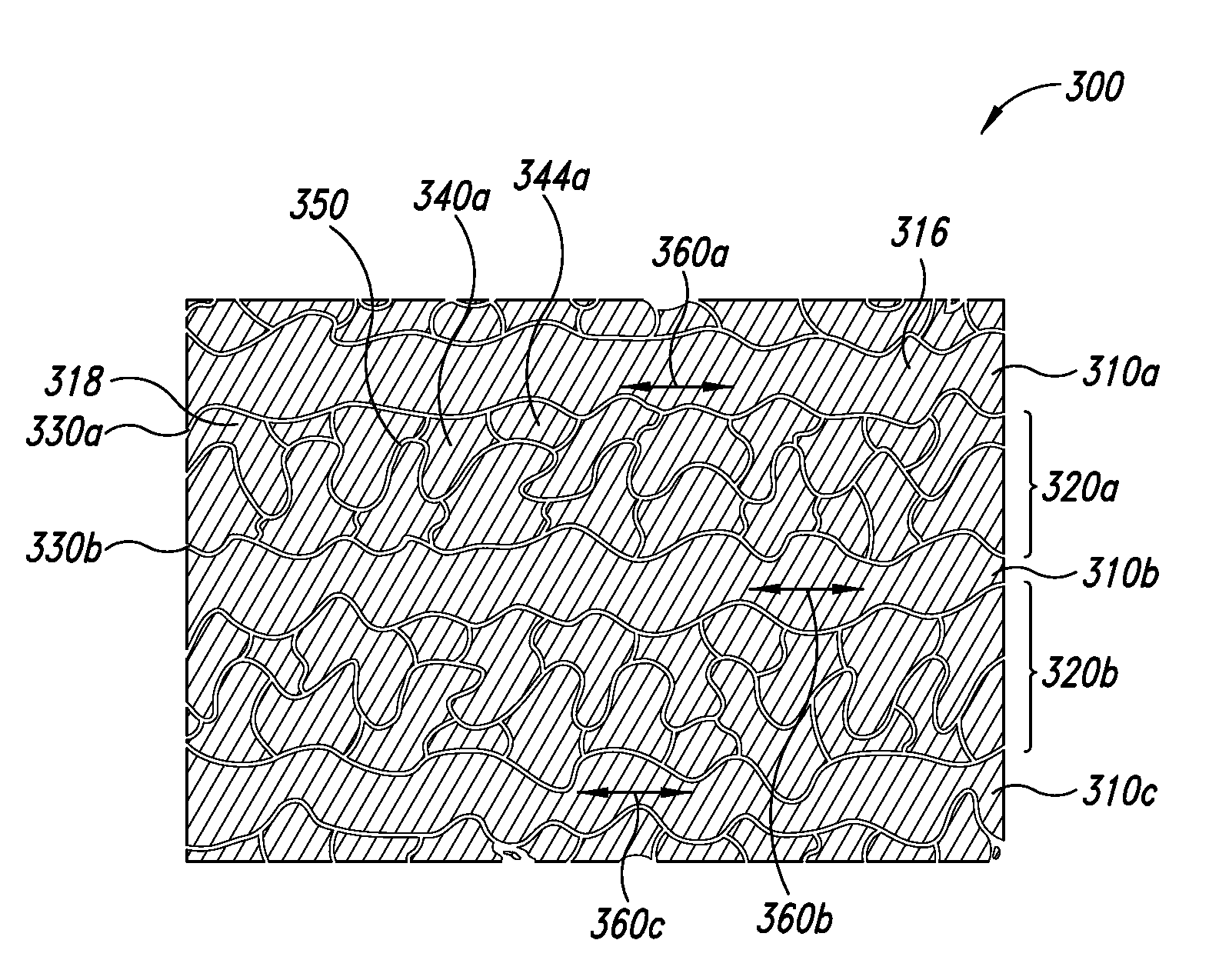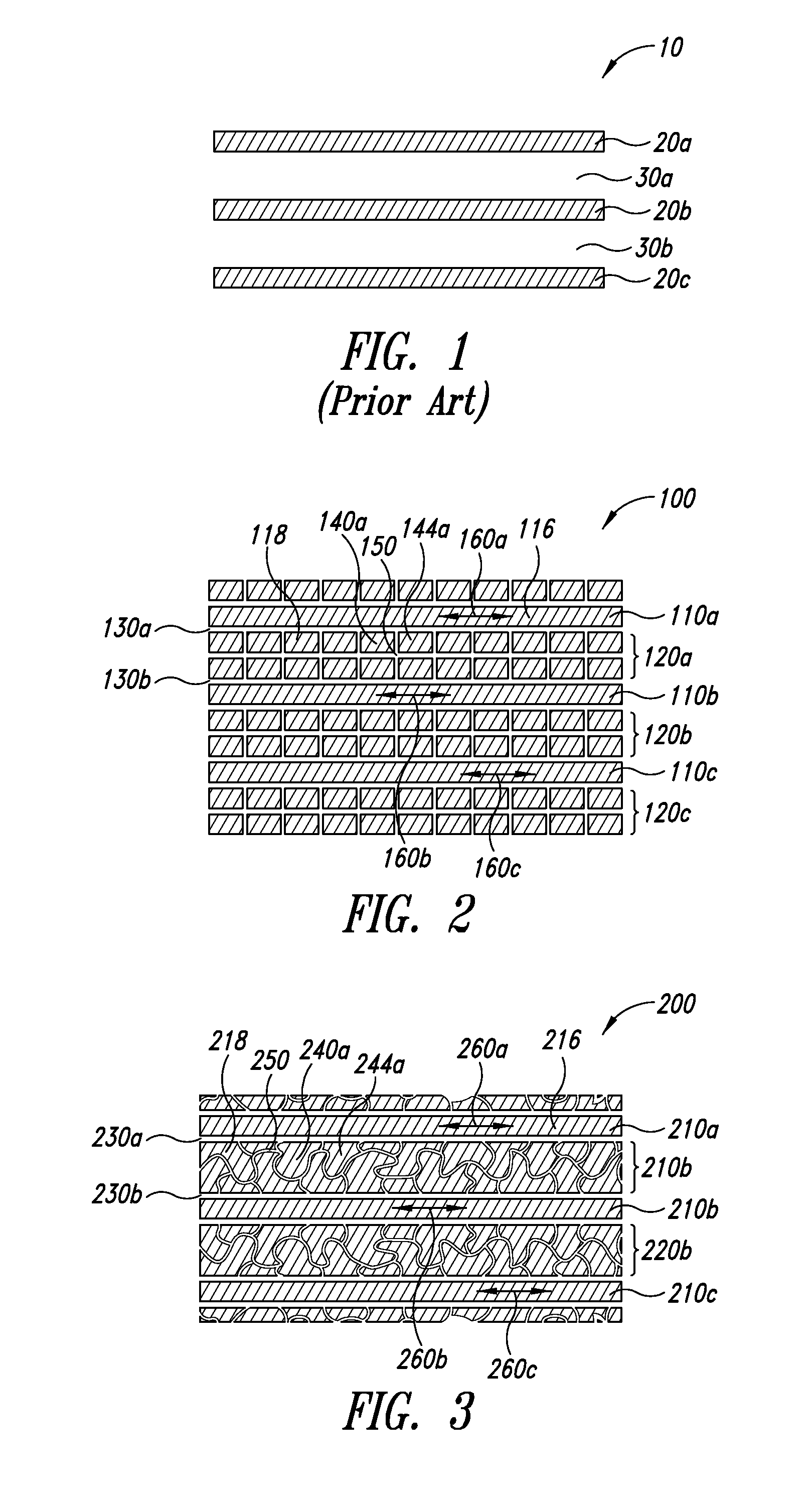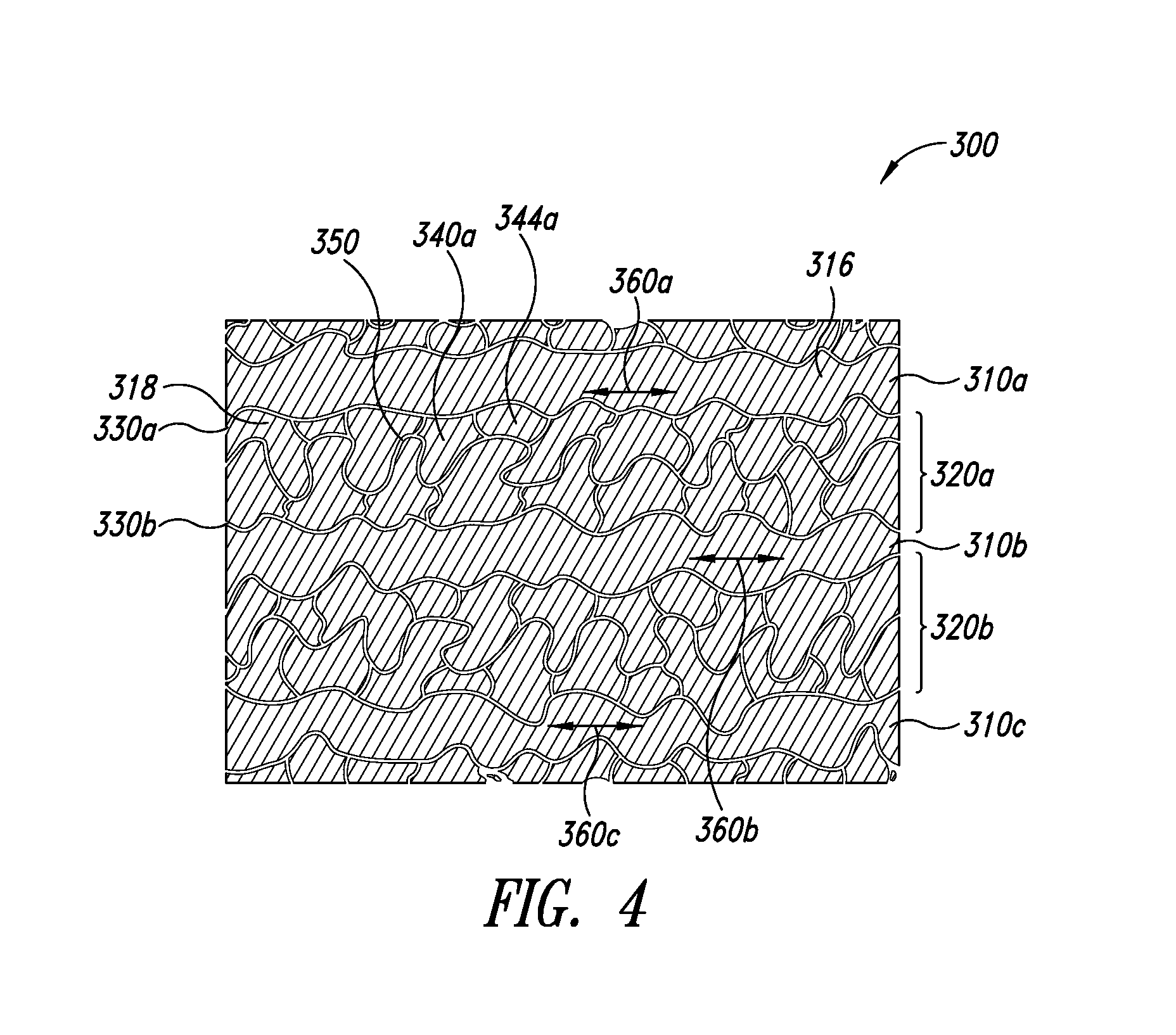Conductive films having low-visibility patterns and methods of producing the same
a technology of low-visibility patterns and conductive films, applied in the direction of superimposed coating process, resistive material coating, liquid/solution decomposition chemical coating, etc., can solve the problems of inconvenient vacuum deposition, fragile metal oxide film, prone to damage,
- Summary
- Abstract
- Description
- Claims
- Application Information
AI Technical Summary
Benefits of technology
Problems solved by technology
Method used
Image
Examples
example 1
Synthesis of Silver Nanowires
[0071]Silver nanowires were synthesized by the reduction of silver nitrate dissolved in ethylene glycol in the presence of poly(vinyl pyrrolidone) (PVP) following the “polyol” method described in, e.g., Y. Sun, B. Gates, B. Mayers, & Y. Xia, “Crystalline silver nanowires by soft solution processing”, Nanoletters, (2002), 2(2) 165-168. A modified polyol method, described in U.S. application Ser. No. 11 / 766,552, in the name of Cambrios Technologies Corporation, produces more uniform silver nanowires at higher yields than does the conventional “polyol” method. This application is incorporated by reference herein in its entirety.
example 2
Low-Visibility Patterning
[0072]A suspension of HPMC, silver nanowires and water was prepared. The suspension was spin-coated on a glass substrate to form a thin conductive film of silver nanowires in a HPMC matrix. The conductive layer was optically clear, with an optical transmission (% T) of about 88.1% and haze (% H) of about 2.85%. The conductive layer is also highly surface-conductive with a surface resistivity of about 25Ω / □.
[0073]Thereafter, a region of the conductive film was treated with an oxidizing agent, e.g., a bleach solution having 0.5% hypochlorite, for 2 minutes. The treated film was then rinsed with water and dried in a nitrogen atmosphere. The treated region of the film showed substantially the same transmission (89.1% T) and haze (5.85% H) as compared to the optical properties of the untreated region. The treated region and the untreated region were visually uniform.
[0074]The surface resistivity of the treated region, however, has increased by several orders of m...
example 3
Photoresist Patterning Method
[0076]A silver nanowire dispersion was prepared consisting of 0.2% HPMC, 250 ppm TritonX100 and silver nanowires. The dispersion was spin-coated onto a substrate and baked for 90 seconds at 180° C. This nanowire film was then spin-coated with AZ-3330F photoresist to make a 2.5 μm transparent conducting film. The transparent conductor was then baked at 110° C. for 60 seconds. A photomask was placed in contact with a portion of the photoresist layer and the transparent conductor was exposed to light for 20 seconds at 12 mW / cm2. The conductor was then baked for 60 seconds at 110° C.
[0077]The photoresist was then developed with AZ300MIF developer, rinsed and spun dry. The conductor was then exposed to Transene silver etchant for 10 seconds, rinsed and spun dry. The photoresist was then stripped using Acetone. The transparent conductor was overcoated with Polyset PCX35-39B at 2.5% dilution in PGME and then cured for 45 min. at 180° C. The resulting patterned ...
PUM
| Property | Measurement | Unit |
|---|---|---|
| surface areas | aaaaa | aaaaa |
| width | aaaaa | aaaaa |
| width | aaaaa | aaaaa |
Abstract
Description
Claims
Application Information
 Login to View More
Login to View More - R&D
- Intellectual Property
- Life Sciences
- Materials
- Tech Scout
- Unparalleled Data Quality
- Higher Quality Content
- 60% Fewer Hallucinations
Browse by: Latest US Patents, China's latest patents, Technical Efficacy Thesaurus, Application Domain, Technology Topic, Popular Technical Reports.
© 2025 PatSnap. All rights reserved.Legal|Privacy policy|Modern Slavery Act Transparency Statement|Sitemap|About US| Contact US: help@patsnap.com



